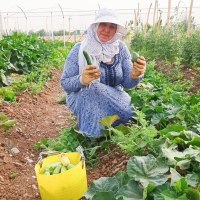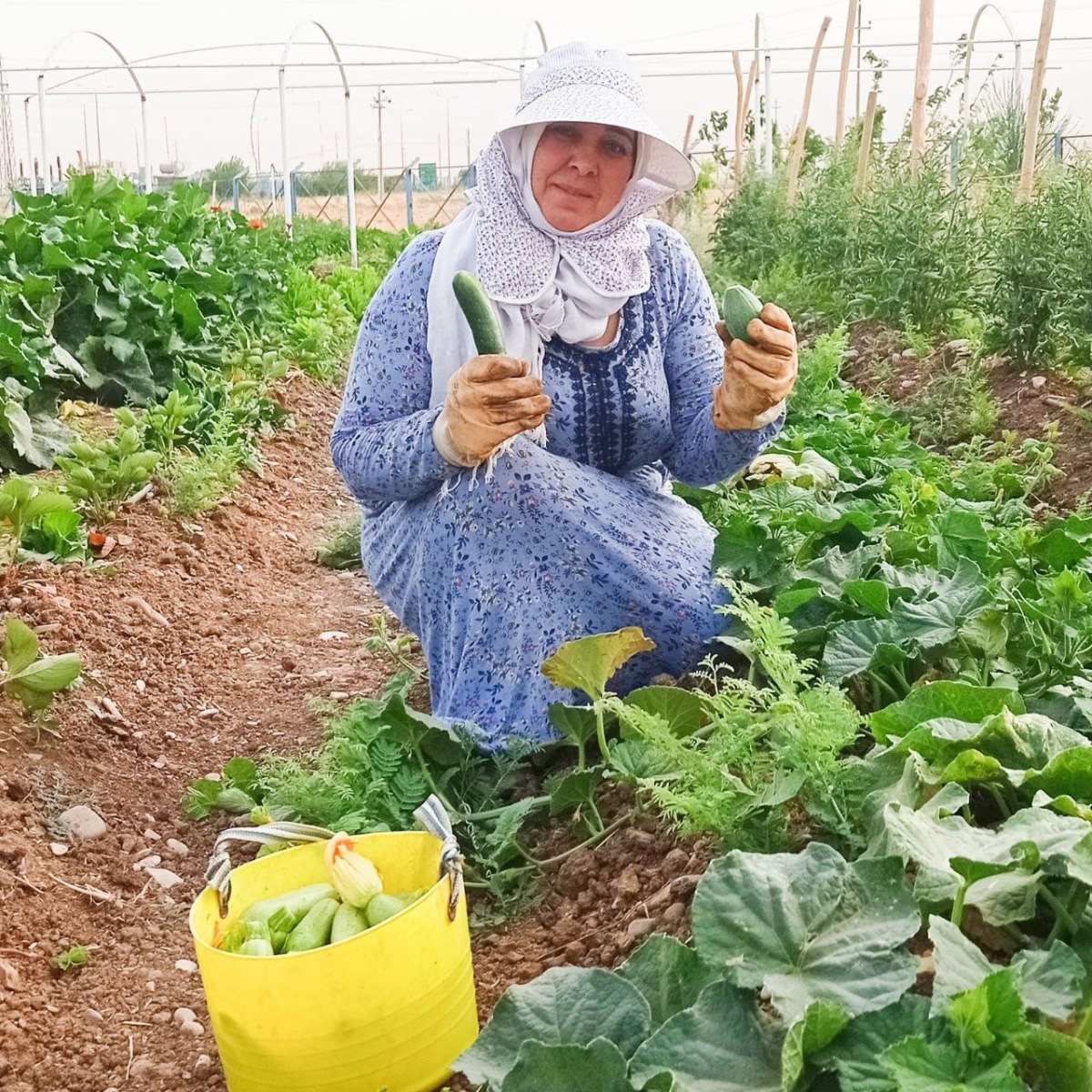In a Syrian refugee camp in northern Iraq, more than a garden grows. If you have followed the 100-year community farm’s progress over the last year, you have seen how we’re using regenerative and sustainable agricultural practices to restore and improve the soil. Our techniques produce thriving crops. Last year, the community farm yielded 850 kilograms of healthy food to feed nine families. But the farm is having another profound effect.
A Unique Capacity to Create Peace
Farmers don’t have control over the factors that impact land. For example, exploded bombs and ammunition contaminate the soil. Climate change contributes to drought or paradoxically intensifies rain, causing flooding. Farmers don’t have a say in when wars start, nor do they control the weather, but they have to cultivate the land regardless. Since farming is a struggle, doing it together makes it easier for everyone involved.
Working the land together gives joy and brings peace. All of us, even those who live in urban environments, need the land to be healthy in order for us to thrive. That’s why divided communities will come together out of necessity to grow food. Whether you’re sharing planting techniques or reminiscing about how you farmed back in Syria, the land is an easy place to have a conversation. From conversations, relationships grow as we realize there is more that unites us than divides us, and we all need each other. There’s a sense of togetherness because everyone is farming to benefit their families. Working together increases that benefit. For example, if several farms share a river, the farmer upstream knows that damming the river to hoard water will ultimately hurt his farm. The river needs to flow for the water system to remain healthy. When farmers work together in the community, farming becomes regenerative.
The Difference Between Regenerative and Sustainable
Whereas sustainable farming practices produce what the soil uses now, regenerative farming practices feed the earth beyond what is presently needed, rejuvenating the land for future use. In this way, regenerative practices give back to the environment, which, like peace-building practices, benefits the entire community now and into the future.
Nature is diverse. Similar to the benefits cultural diversity brings to a community, planting diverse crops increases the nutrient content in the soil, decreases pest problems, and reduces plant disease.
Regenerative Techniques Put into Practice
Farmers Yaser, Muhiedeen, and Aziza use natural practices they learned from their families’ farms back in Syria and new techniques introduced by Preemptive Love’s permaculturist Kayla Hatcher. In this way, the marriage of farming practices becomes a partnership with lots of dialogue to create a settled space.
Elemental to natural practices is not using chemicals, so we plant non-genetically modified organism (GMO) seeds.We don’t use insecticides to maintain crops because chemicals block a plant’s ability to absorb nutrients from the soil, diluting fruit and vegetables’ flavor. When chemicals are not used, plants take in more nutrients from the ground, which we experience as a more intense flavor.
Instead of using chemicals to maintain crops and the soil, the 100-year community farm uses regenerative techniques such as growing green manure cover crops (crops grown for mulch and used to feed the soil), composting, and using a liquid fertilizer made from animal manure, green plant material, and water. These techniques reduce farming expenses while they increase pollinators and make the soil healthy.
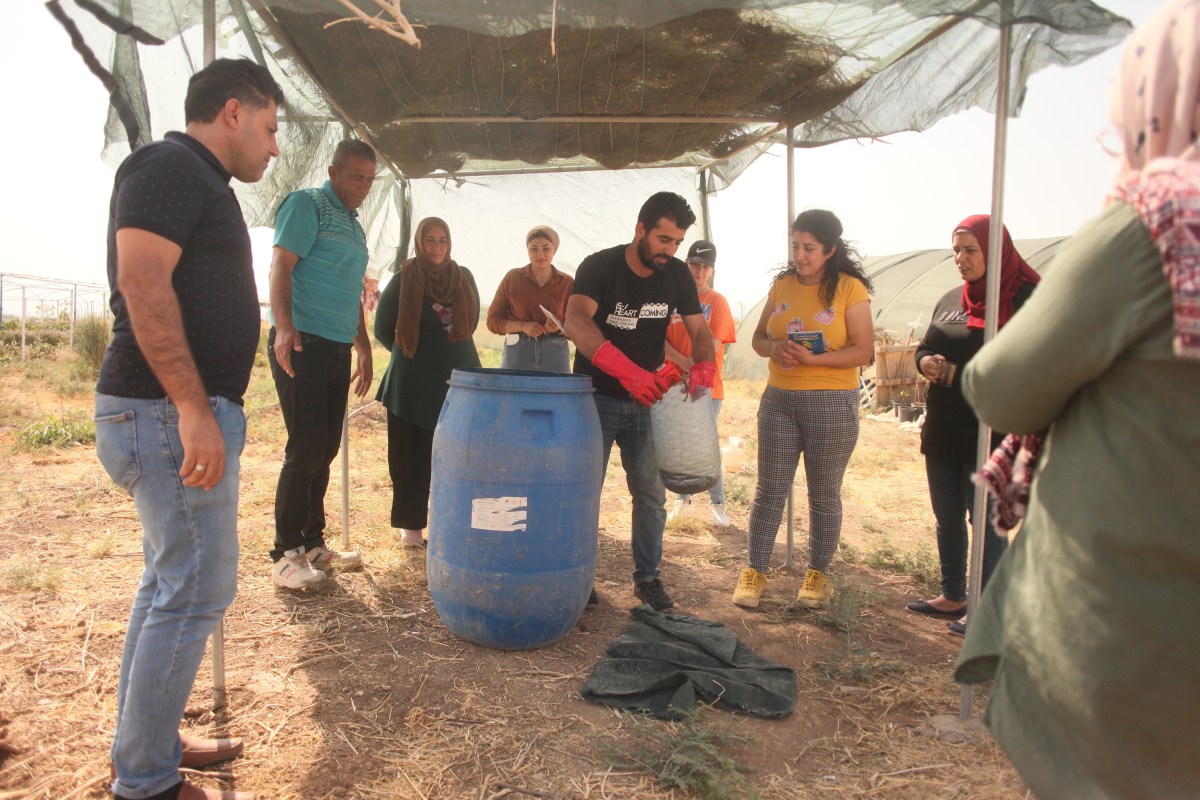
In addition, the farm harvests rainwater and directs it slowly into the soil to refill aquifers and help plant roots hold water in the ground . When the soil retains water, the soil temperature decreases, reducing dehydration (super important during northern Iraq’s hot, dry summers) and increasing the presence of healthy microbes and plant growth. In 2022, the farm harvested 58,907 gallons of rainwater.
Kayla also introduced propagation practices (using the plant material, you have to make more plant material) to further improve the soil’s health and benefit the community. Cuttings are taken from trees or plants and used to grow new ones. The farm community learned how to use plant grafting to increase the variety of produce grown and introduce new varieties such as purple tomatoes and husk cherries. Grafted trees tend to be stronger and yield fruit in the first year. Plant diversification safeguards against food insecurity if a crop fails
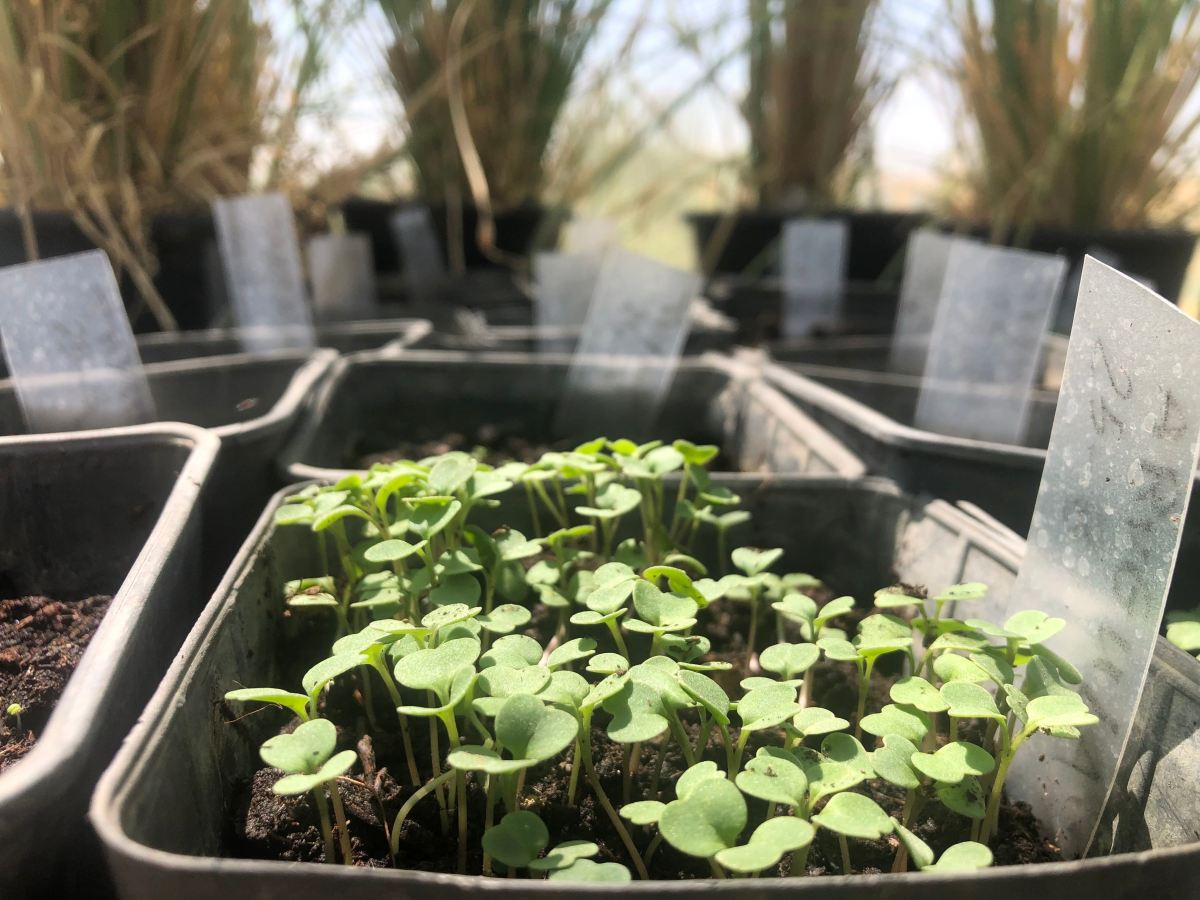
Arugula seeds planted in our nursery have grow into strong plants. Soon they will be transplanted into the ground. Nurseries enable us to extend the planting season. Photo by Kayla Hatcher for Preemptive Love. 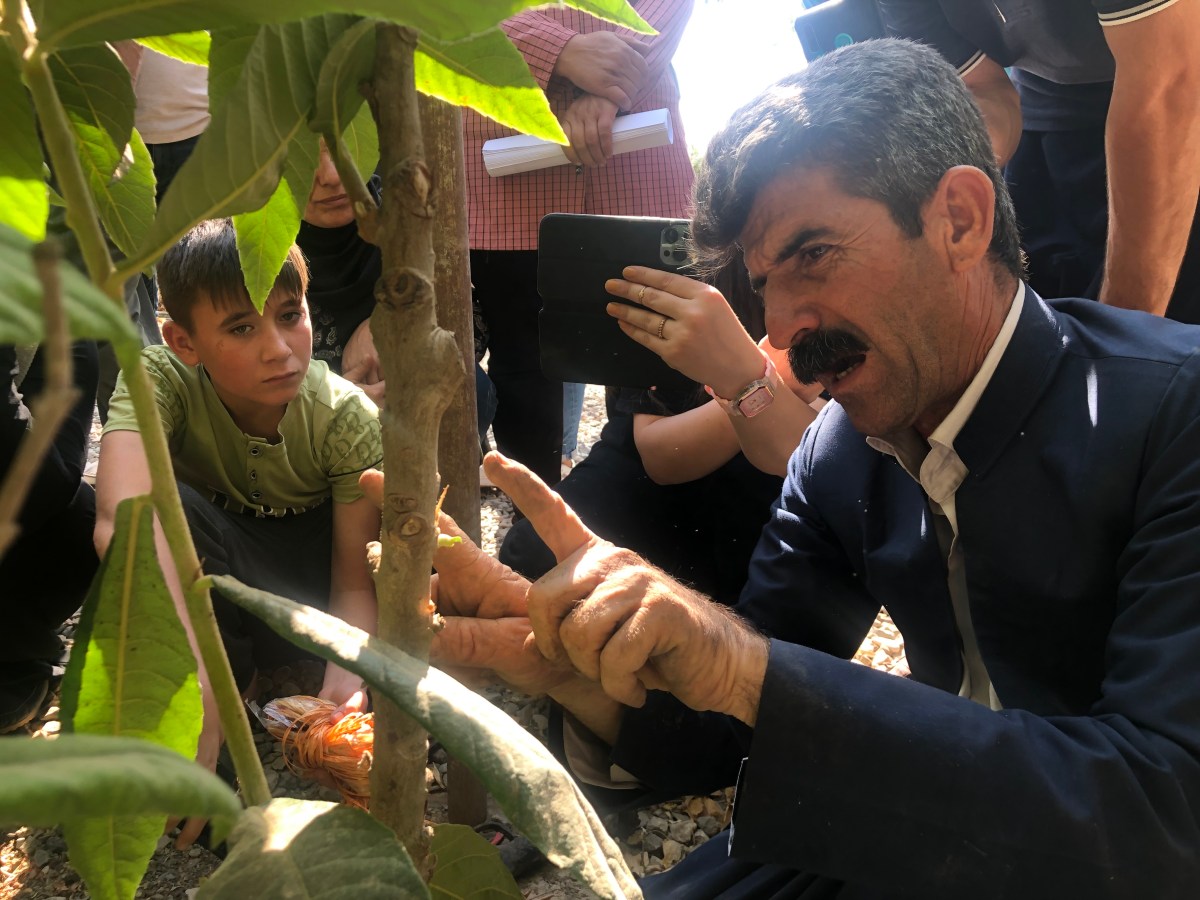
Kak Azad, famous for his grafting techniques, teaches us to graft on his farm in Halabja. Photo by Kayla Hatcher for Preemptive Love. 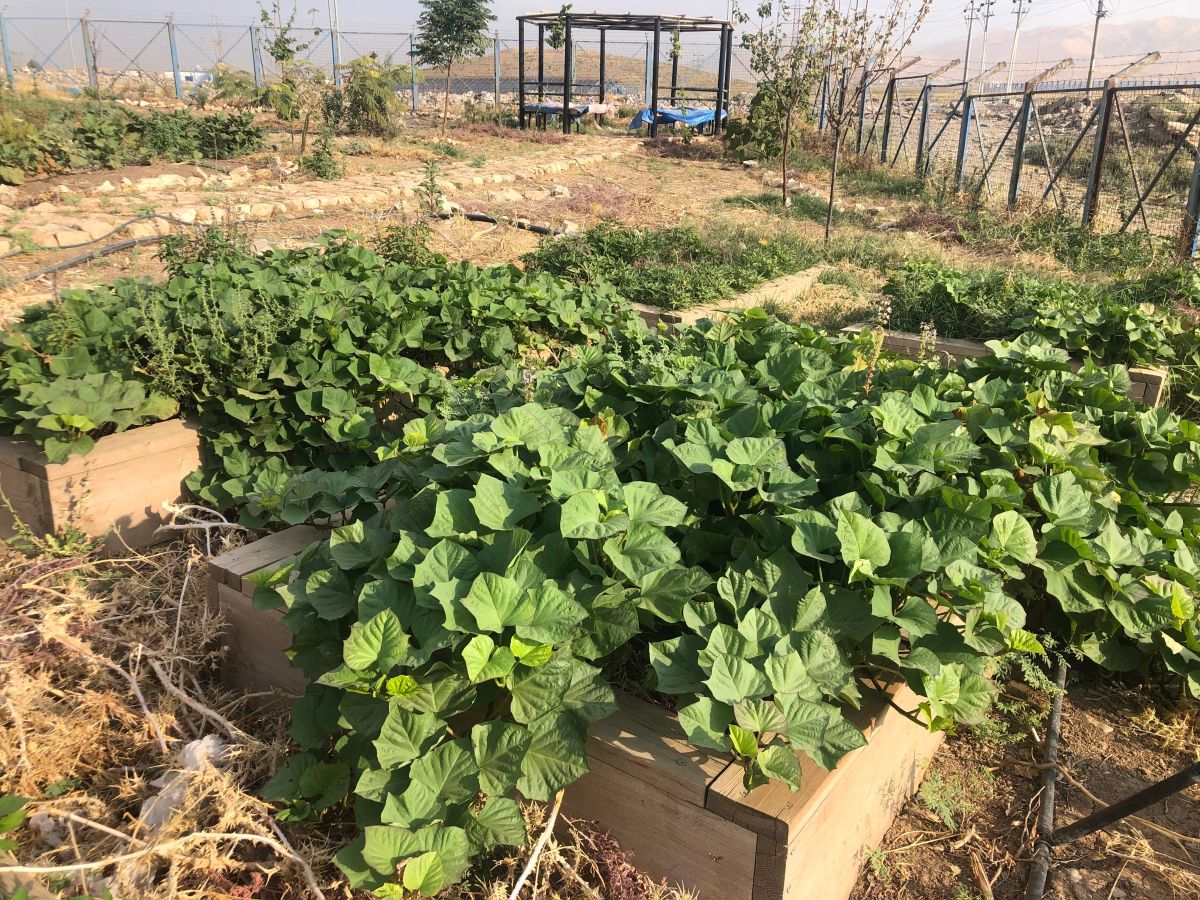
Sweet potatoes growing in Kurdistan! Almost all sweet potatoes are imported into Kurdistan, but our trial crop is thriving. Sweet potatoes are a high nutrient, high value crop that benefits the soil by providing ground cover, which reduces soil temperatures in hot months. Photo by Kayla Hatcher for Preemptive Love.
Diversification in planting is essential to maintaining a healthy ecological system. Nature is diverse. Similar to the benefits cultural diversity brings to a community, planting diverse crops increases the nutrient content in the soil, decreases pest problems, and reduces plant disease. Even weeds are welcome.
“Weeds,” which Kayla explains is a human-centric term, are native plants serving a necessary ecological function. When native plants appear, they are nature’s way of telling us there is a problem in the ecological system. For example, the appearance of native plants could tell us the soil has become acidic or too dry. In this way, nature uses the native plant to heal itself because the native plant brings what is lacking to the soil.
We’ve also started a seed bank on the farm to increase food sovereignty in the region. Forming the seed bank helps us build relationships with other farming communities in the region as we share and store harvested seeds from everyone’s plants in a central location. Local ownership over food sources is particularly important in Iraq, where most food products are imported from Iran and Turkey.
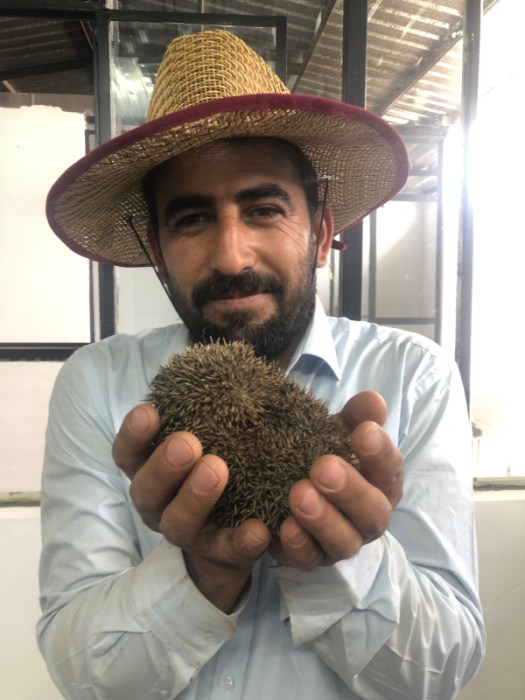
The farm would not exist without the passion of the nine families who work on it. Their desire to have agency over the land motivates their daily 5 am start, come rain or shine. Without much money and despite a severe drought, these farmers are restoring the land’s health and vitality for generations to come. By working in the community, they are healing the land, their families, and one another.

